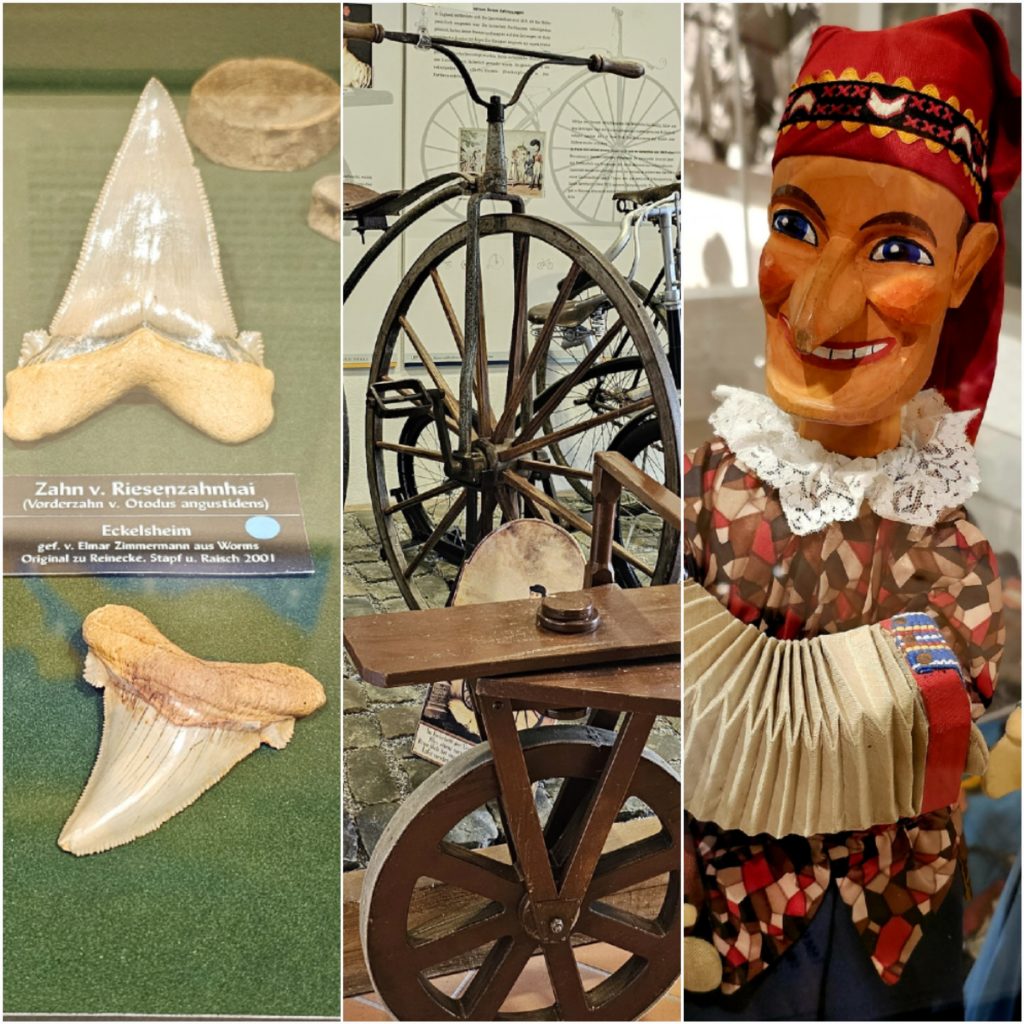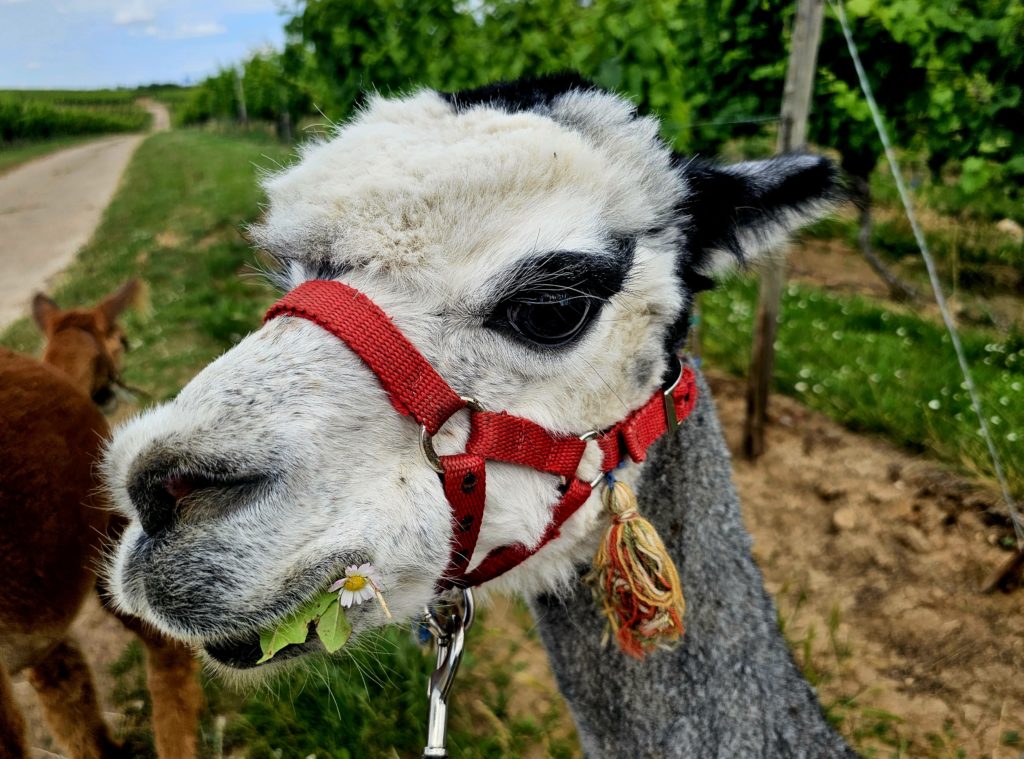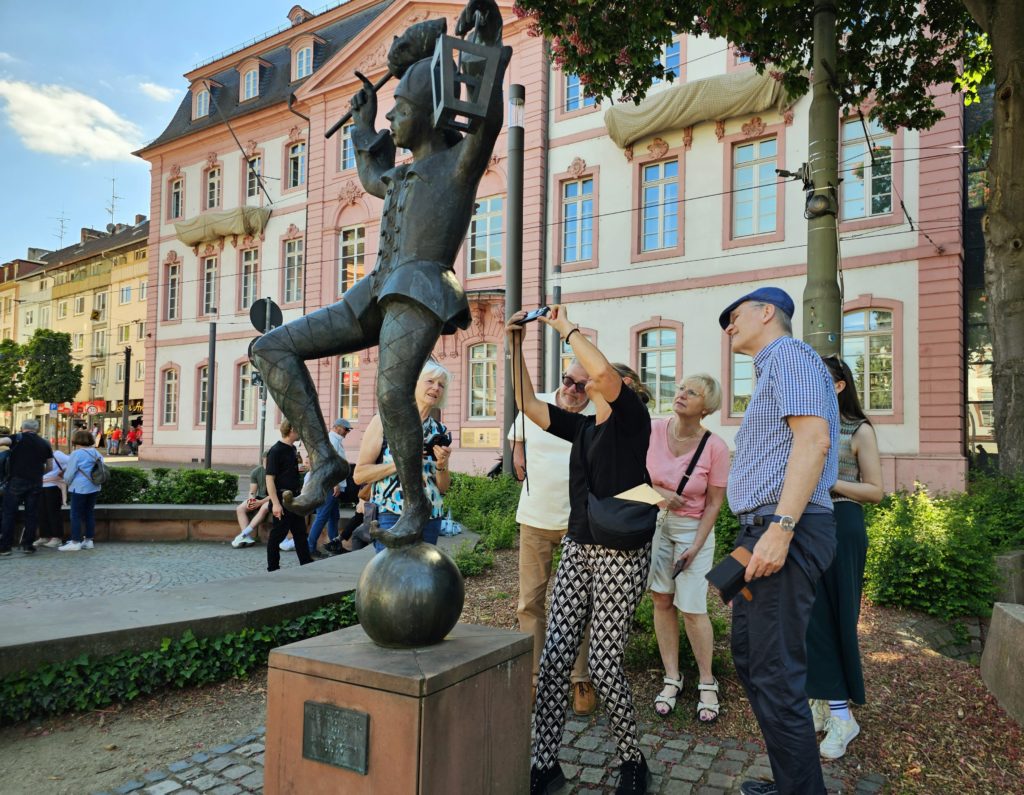Bad Kreuznach: A city walk full of art and culture at the historic Kornmarkt
The Spa town Bad Kreuznach, about 40 km southwest of the state capital Mainz, offers plenty of sights. From health vacations and wellness offers, to hiking and cycling routes, to wine and pleasure tours, the range of possibilities is wide. In addition, the city is worth a visit for shopping and for its cultural offerings. Here you will find information and tips for a city tour with worthwhile art and cultural discoveries.
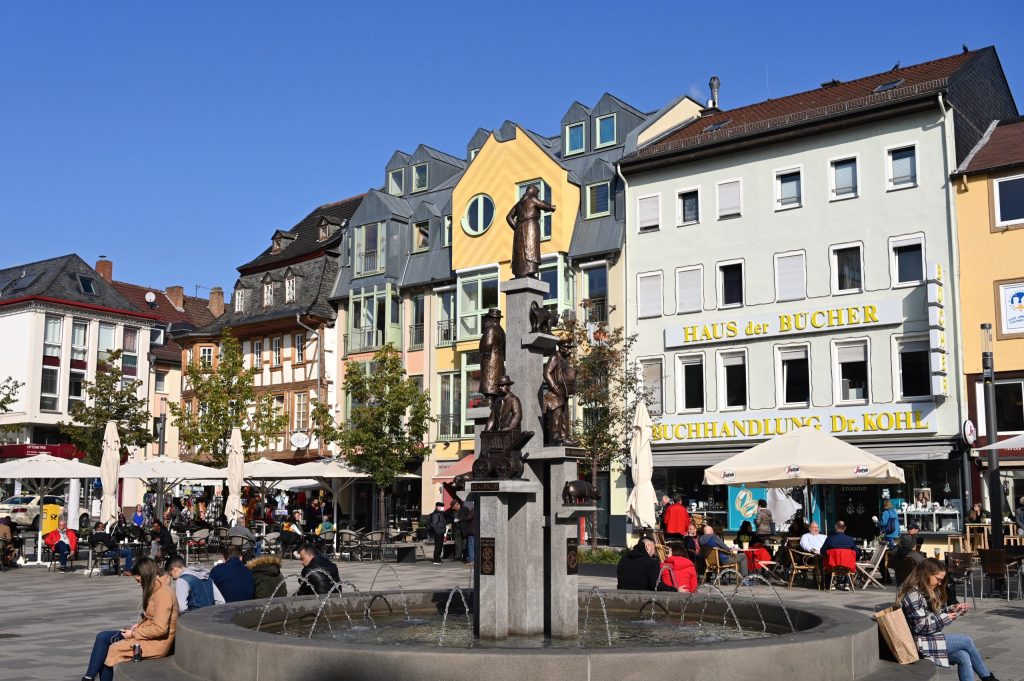
A good starting point for a tour of the city is the Kornmarkt, the historic market square in the center of Bad Kreuznach. Here you will also find the original fountain designed by Bad Kreuznach sculptor Karl Steiner. It is a piece of the city's history, because local originals are depicted, such as "Es Gänzje", "De Debbedee" and "De Schutzmann Wiechert". There are anecdotes about each of these people, which also tell something about the town and the local area.
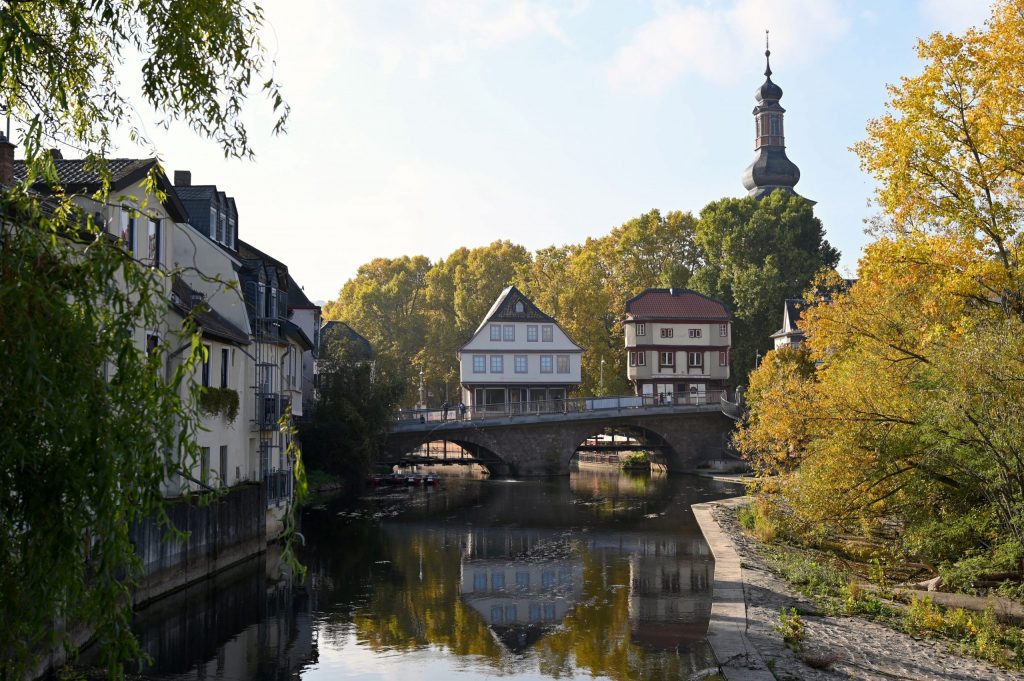
The Old Nahe Bridge - A historical landmark with the famous "Turner view".
The Old Nahe Bridge, just a few meters from the Kornmarkt, is the landmark of Bad Kreuznach. Along with the Krämerbrücke in Erfurt and the Inner Bridge in Esslingen am Neckar, it is one of the bridges in Germany that is still are built with houses. The medieval stone bridge was built around 1300 by the town lord Count Simon II and was first mentioned in 1322. It spans the Nahe and the Mühlenteich, a tributary of the Nahe. The four historic buildings of the bridge have been listed since the 1980s.
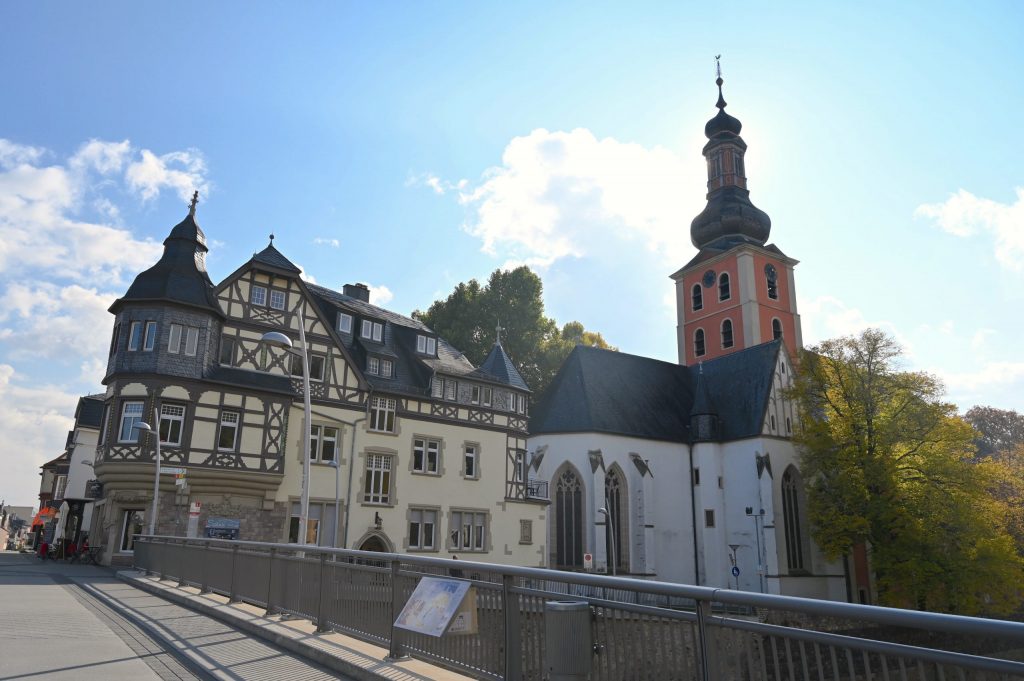
This view from the Nahe Bridge has also entered the art world as the "Turner View" in artistic-creative form. How did it come about? The English painter Joseph M. William Turner (1775 - 1851) was traveling through Germany in 1844. When he learned that the Alps were closed for several months, he stopped off at the Moselle, Neckar and Nahe rivers. It was here that he made the sketch for the watercolor "Kreuznach an der Nahe", in which St. Paul's Church and the Kauzenberg can be seen. The bright panel on the bridge railing recalls the painter and his work, which was characterized by light and mood.
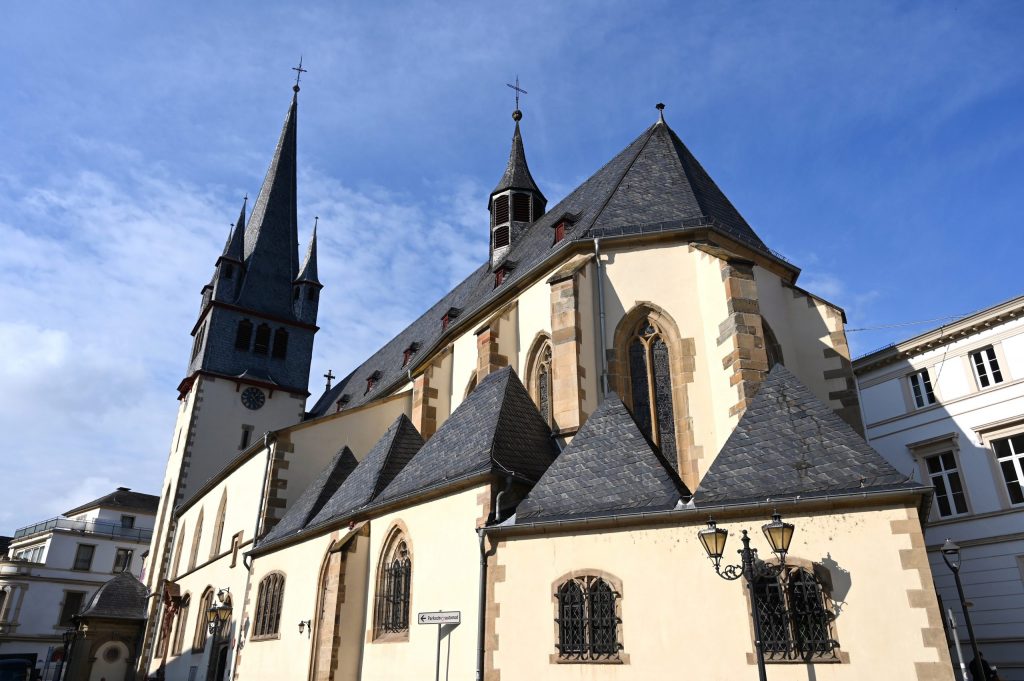
Bad Kreuznach: Culture and history in the old new town and the castle park
Bad Kreuznach's Neustadt, also called the old Neustadt, is the city's medieval quarter with many historic buildings. It is located on the western bank of the Nahe River. The most important church in the city, the Catholic Church of St. Nicholas, is also located here. Originally it was a monastery church of the Carmelites. Donated in 1260 as a chapel of St. Nicholas, it was transformed into a church in 1290. The stained glass windows were created by the Frankfurt glass painter Alexander Linnemann.
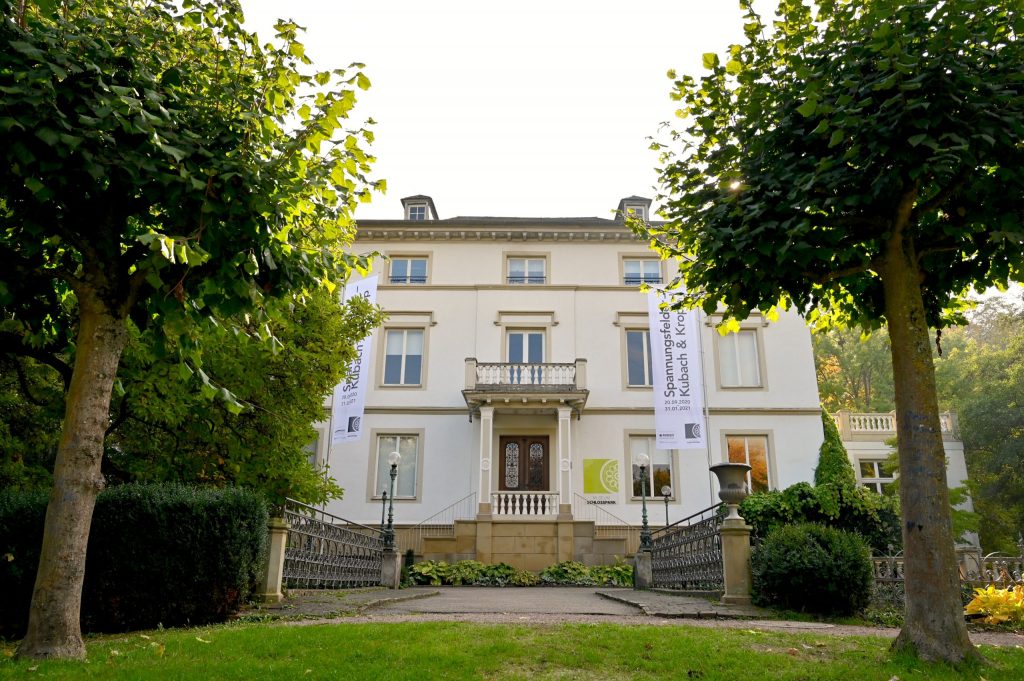
From the old new town, it is only a few minutes' walk to the castle park. This is worthwhile not only for nature lovers, but also for art fans. Significant is the Museum castle park with its art and urban history collection as well as changing exhibitions of contemporary art. The building itself, a stately villa in classicist style, is also worth seeing. Since there are other museums in the immediate vicinity, this area is also called the cultural district.
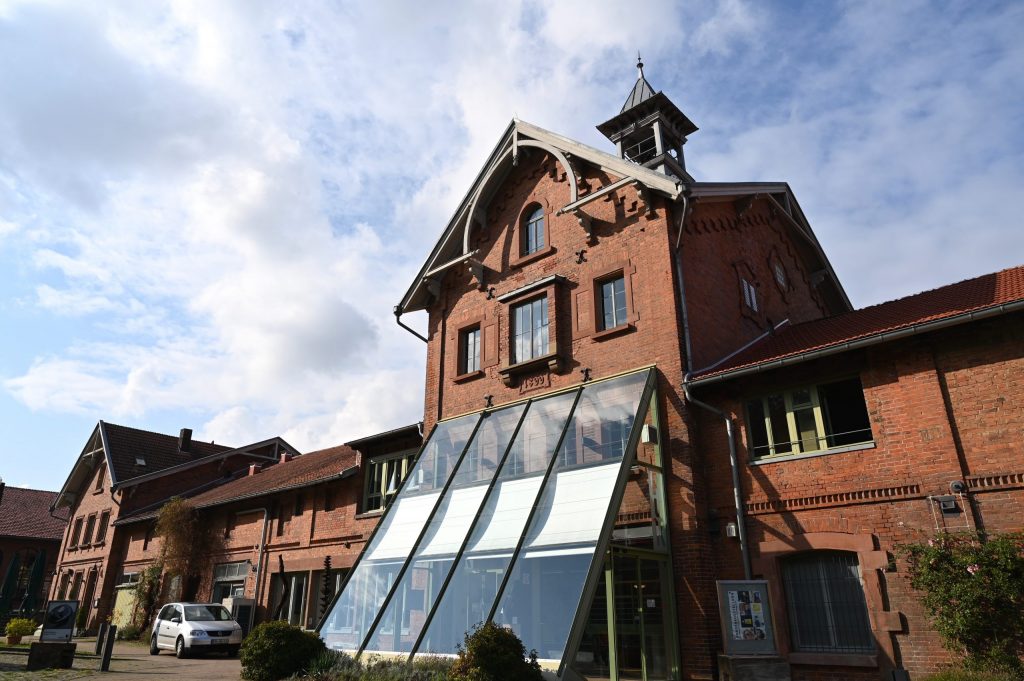
At least as worth seeing is the Museum of Puppet Theater Culture . Puppets from the Augsburg Puppet Box, valuable theatricals on all well-known puppetry traditions, interactive hands-on stations - the museum's journey of discovery on 700 square meters appeals to children and adults alike. There are audio stations for the visually impaired and dementia tours are available for people with dementia. There is a beautiful playground in front of the museum - perfect for a family outing.

Experience culture and history - From the Roman Hall to the Kauzenburg and the Protestant St. Paul's Church
Insights into the ancient world of the Romans can be found right next door in the Museum Roman Hall. Worth seeing marble reliefs, wall paintings and mosaic floors with scenic representations of gladiators, ships, merchants and life in those times. In the basement of the Roman Hall, soldier gravestones from Bingerbrück can be seen and there is also an outdoor area with the remains of a Roman villa. There are also guided tours on various topics from the Roman period and workshops for children and young people.

From the Roman Hall, a path leads up to the next sight and here, too, you can immerse yourself in the cultural history of the city. High above towers the Kauzenburg, which served as the former residence of the anterior county of Sponheim. The fortress has been conquered by the Spanish, the Swedes and the French in its eventful history. From today's castle ruins you have a beautiful view of Bad Kreuznach and the surrounding region. There is also a restaurant with a knights' hall and the Landhotel Kauzenberg up here.
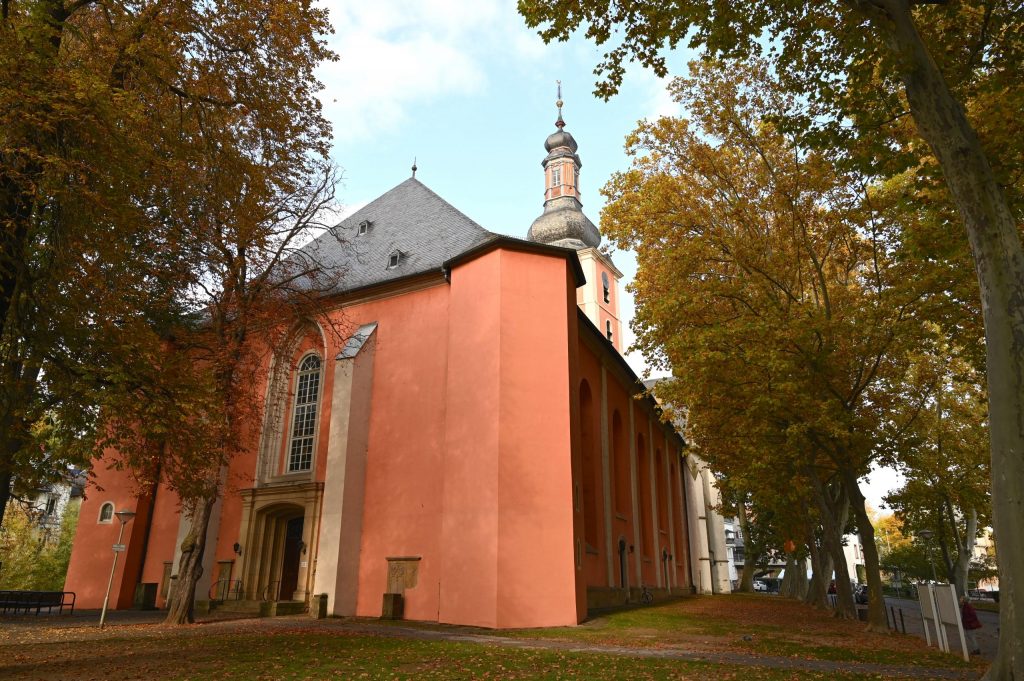
The Protestant St. Paul's Church There are two options on the Kauzenberg: either you continue south on the panorama path or you walk down the narrow path in an easterly direction back to the city. With the latter option, you come out again at the Nahe bridge with the Turner view. From there, it's worth visiting the Protestant St. Paul's Church. The three-nave basilica was built from 1311 as a parish church by Count Johann von Sponheim. The building is the largest church between Mainz and Trier and it was here, by the way, that Karl Marx and Jenny von Westphalen were married on June 19, 1843. The beautiful church stands on an island between the Nahe and Mühlenkanal.

From the spa house to the graduation house in the Saline Valley and other highlights
At the end of the city tour we go to the short park south of St. Paul's Church. One of the most beautiful and famous buildings in the city is definitely the Kurhaus. It was built in 1913 according to plans by Emanuel von Seidl and was built after Bad Kreuznach had made an international name for itself through radon therapy. The list of heads of state who have met in the Kurhaus is long. Therefore, the building is not only a spa house and hotel, but also a place of historical events. For example, Charles de Gaulle and Konrad Adenauer met here to clear the way for Franco-German friendship.
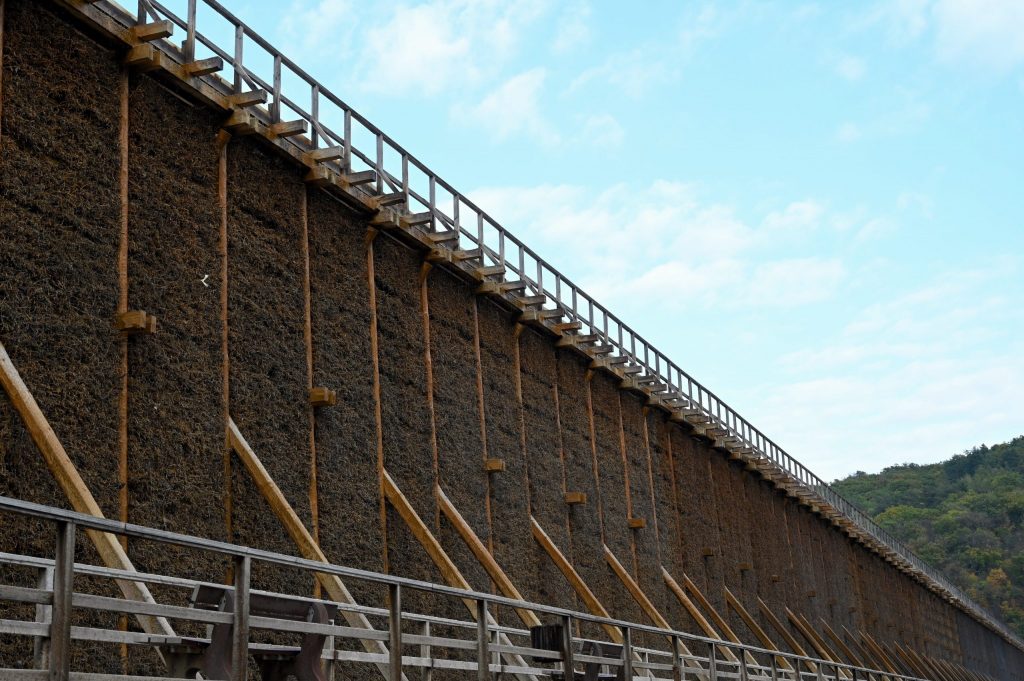
Another cultural monument is located in the Salinental valley between Bad Kreuznach and Bad Münster am Stein-Ebernburg: a total of nine graduation towers with a length of 1,100 meters form the largest open-air inhalatorium in Europe. A walk along the massive hedge walls is not only a benefit for health, but also a journey into the history of salt production, because in the Nahe valley there are numerous salt springs. The healing water is still used for cures today.
Here are three more tips for a visit: Fondation Kubach-Wilmsen - Stone Sculpture Museum, Cauerhaus Bad Kreuznach - Cauer Museum, Artist station Ebernburg

